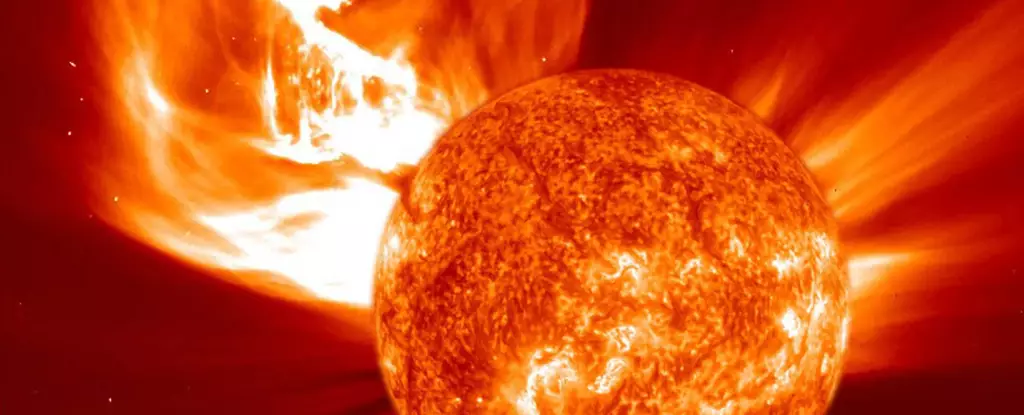The Binar Space Program, operated by Curtin University in Australia, has gained recognition for its innovative approach to satellite technology and space research. The program aims to unravel the complexities of the Solar System while fostering research and educational opportunities. The first satellite, Binar-1, launched in 2021, highlighting a commitment to affordable space exploration. Designed as a CubeSat, Binar-1 remarkably exceeded its expected lifespan, operating successfully for 364 days in low Earth orbit. However, this success was not replicated with subsequent launches. The most recent trio of satellites, Binar-2, 3, and 4, entered orbit with ambitious goals and expectations but faced untimely destruction due to unforeseen cosmic phenomena.
Solar activity has a profound impact on satellite operations, particularly for those in low Earth orbit (LEO). The Sun’s behavior is dictated by an eleven-year cycle known as the solar cycle, during which solar events like sunspots, solar flares, and solar wind fluctuate significantly. Currently, we find ourselves near the peak of solar cycle 25, which has resulted in heightened levels of solar activity that surpassed initial predictions. The repercussions of this increased solar activity are far-reaching, extending well beyond the tangible impact on satellites. The changes also affect a variety of technological systems on Earth, including communications and navigation.
The recent higher-than-forecasted occurrences of solar events have resulted in a cascading effect on satellites, especially those functioning at lower altitudes. As the Sun’s energy pours into space, it adds heat to Earth’s atmosphere, causing it to expand and create additional drag on satellites within LEO, such as the Binar CubeSats. Without thrusters or other altitude-control mechanisms, these smaller satellite platforms are left vulnerable to forces beyond their control.
What was intended as a significant analytical mission for the Binar program ultimately ended in an unfortunate early termination. The Binar-2, 3, and 4 satellites were designed with optimized surfaces intended to capture solar energy and extend their operational lives to around six months. However, cosmic dynamics steered them toward an unexpected early demise, incinerating them within just two months.
The failure to anticipate the intensity of solar interactions illustrates a critical gap in space weather forecasting. As solar activity increases, the risk of atmospheric drag for LEO satellites grows, leading to operational challenges that threaten mission longevity. For the Binar satellites, the consequences were severe; instead of providing valuable data about our solar system, they succumbed to the very elements that they were intended to monitor.
The loss of these CubeSats provides a significant cautionary tale not only for academic institutions but also for commercial entities operating satellites in similar orbits. High solar activity poses risks for all satellites that lack the appropriate thrusters or operational mechanisms to manage atmospheric drag effectively. Such satellites become susceptible to unpredictable atmospheric conditions, which may accelerate their degradation or lead to catastrophic failures.
Moreover, the challenges faced by the Binar satellites can have economic repercussions. The relative affordability of CubeSat missions may create the illusion of low-risk endeavors; however, the actual costs incurred from mission failures can far exceed initial budget estimates. Consequently, enhanced investment in reliable forecasting models could mitigate risks for future missions. As both governmental and private entities ramp up satellite launches, reliable space weather forecasting becomes essential in minimizing operational risks and optimizing mission planning.
Despite the unfortunate setbacks, the Binar Space Program is forging ahead with plans for future missions aimed at greater resilience against solar activity. Lessons learned from the demise of Binar-2, 3, and 4 will contribute to the development of future satellites equipped with improved systems to withstand the unpredictable nature of space weather.
This proactive approach will not only enhance the program’s credibility but also inspire other researchers and engineers to design smarter satellite systems that strategically anticipate and adapt to the risks posed by solar phenomena. As we look to the future, enhanced understanding and improved technology will be pivotal in navigating the complexities of satellite operations in an increasingly variable space weather environment.
The unfortunate ending of the Binar-2, 3, and 4 missions serves as a pressing reminder of the dynamic interplay between solar activity and satellite operations. The need for sophisticated forecasting and robust satellite design is undeniable as we venture further into both the mysteries of our solar system and the challenges that space weather presents. The Binar Space Program exemplifies the need for innovation in addressing these critical issues.


Leave a Reply